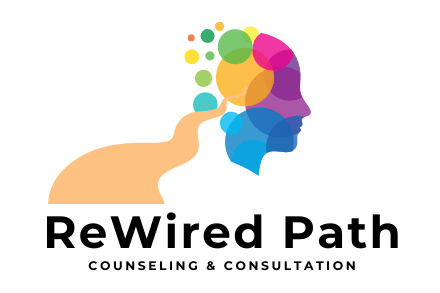What Your Body Is Trying to Tell You – How Emotions Show Up Physically

Have you ever noticed your shoulders creeping up toward your ears after a long day, or felt a pit in your stomach when you’re nervous? These are just two of the countless ways our emotions manifest physically. Our bodies are constantly communicating with us, often sending signals long before our conscious minds catch up. At ReWired Path, we believe that understanding these signals is a vital part of healing and mental wellness.
How Emotions Physically Manifest in the Body
The relationship between our emotional and physical selves is intricate and powerful. Emotions don’t just exist in the mind; they are stored, expressed, and sometimes trapped in the body. When we experience stress, trauma, grief, anxiety, or even joy, our bodies react. For example, chronic stress might show up as tension headaches, clenched jaws, or digestive issues. Long-term emotional suppression can lead to fatigue, muscle pain, or even autoimmune responses.
Science shows the nervous system and endocrine system working together to regulate our body’s response to emotional states. Cortisol, the hormone released during stress, affects nearly every organ in the body. It’s no surprise that when emotional health is compromised, physical symptoms often follow.
Common Physical Signs of Emotional Distress
Learning to recognize the physical symptoms of emotional distress is a key step in building self-awareness and resilience. Here are a few common examples:
Tight shoulders and neck pain: Often linked to the burden of responsibility or chronic stress.
Stomach discomfort: Anxiety and fear commonly affect the digestive system, causing nausea, cramps, or irritable bowel symptoms.
Fatigue: Emotional exhaustion from grief, depression, or burnout can leave you feeling physically drained.
Jaw tension or teeth grinding: A sign of suppressed anger or chronic worry.
Headaches: Often associated with high stress levels or emotional overload.
Shortness of breath or chest tightness: Can be tied to anxiety or panic.
These symptoms are your body’s way of alerting you that something needs attention. They’re not weaknesses or random occurrences; they’re messages asking to be heard.
Why Listening to Your Body Matters
Many of us are conditioned to ignore these signs, to push through the pain or write it off as “normal.” But tuning in to your body can be one of the most compassionate and healing things you do for yourself. When we begin to listen, we start to understand what we truly need—rest, nourishment, connection, boundaries, or professional support.
Practices like mindfulness, breathwork, yoga, and body-based therapies can help strengthen the mind-body connection. By bringing awareness to bodily sensations, we become better equipped to respond to emotional needs before they spiral into crisis.
For instance, noticing that your chest tightens during conflict may signal unresolved fear or the need for safety. Recognizing that your jaw tenses during a stressful work meeting might indicate boundary issues. These moments of insight can guide us toward healing actions.
Integrating the Physical and Emotional for True Healing
True healing involves more than just talking about what hurts—it requires integrating the emotional with the physical. At ReWired Path, we take a holistic approach to mental health, recognizing that the body holds essential clues to emotional well-being.
Therapies that acknowledge the body’s role in healing—like art therapy and mindfulness-based practices—can be especially effective. These methods allow clients to express, explore, and process emotions that may not yet have words. For many, this is the first time they feel fully seen and understood, both in mind and body.
Reaching Out for Support
If you’ve been experiencing unexplained physical symptoms or you feel out of sync with your body and emotions, it may be time to reach out for help. At ReWired Path, we offer compassionate, integrative care that honors the whole person.
Our team is trained to help you explore the deeper emotional roots of your physical discomfort. Whether through traditional talk therapy, art therapy, or mindfulness-based techniques, we’re here to help you reconnect with yourself and find relief. Your body is talking. Reach out today and let’s listen together.
